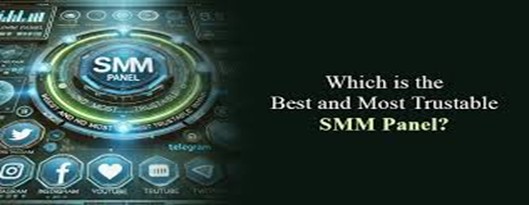
What is an Integrated Circuit?
Integrated circuits, or ICs, are the building blocks of modern electronic devices. Two engineers, Jack Kilby of Texas Instruments and Robert Noyce of Fairchild Semiconductor, independently developed the first IC in 1958.
ICs combine miniature versions of basic components such as transistors and resistors, all connected to perform specific functions. Each IC has a datasheet with information about its function and pinouts.
Function
An integrated circuit (IC), also known as a microchip or computer chip, is an electronic device that contains multiple interconnected semiconductor devices. It consists of miniaturized active devices such as transistors and passive components like resistors and capacitors, all etched on a single piece of semiconductor material. The IC has revolutionized the world of electronics by allowing the construction of complex, multifunction electronic devices that were previously impossible to design with the use of discrete components.
The present invention relates to an integrated circuit comprising therein a programmable circuit and a non-volatile memory device for storing program data concerning the programmable circuit, wherein the degree of integration is improved by placing the non-volatile memory device outside the programmable circuit on the chip. The programmable circuit comprises a transfer circuit for directly transferring not only program data written in the non-volatile memory device but also the program data supplied from an external source to said memory device.
A programmable element is provided at the intersection of each of the vertical and horizontal wiring channels, whereby each time it is programmed, it creates a low-impedance electric connection between two of the wires connected to that programmable element. Consequently, the user can easily move the programmable element to any of the logic modules to test the internal points of those modules.
Origins
The invention of the integrated circuit (IC) has radically changed the way electronic devices are manufactured. It has enabled a multitude of new possibilities for devices that were once impossible to even dream about. The modern information-based society relies on microchips for everything from clocks to flat screen TVs.
The idea for the IC was born on a hot July day in 1958, when inventor Jack Kilby was working at Texas Instruments. His boss had forbidden him to take a vacation that summer, which left him plenty of time to think. It was during this time that he came up with the idea of making the entire circuit on one chip of semiconductor material.
In 1947, William Shockley and John Bardeen discovered that certain crystals could perform electrical functions by allowing electrons to pass through them. This discovery led to the development of a transistor, which was able to perform the same functions as vacuum tubes but consumed less power. Transistors replaced vacuum tubes and brought a new boom to the electronics industry.
But as much as they helped to revolutionize the electronics industry, transistors were still too large for some applications. For that reason, manufacturers needed something smaller than a whole circuit of transistors. Enter Robert Noyce, who was working at the Fairchild Semiconductor company in California at roughly the same time that Kilby was hammering out his ideas for the IC.
Types
Before integrated circuits were developed, each electronic element such as a resistor, diode, capacitor or transistor had to be mounted individually on a separate piece of printed circuit board and connected by external wiring. The advantage of the IC over this is that all the components are grouped together in one unit, allowing them to communicate and cooperate seamlessly in the execution of complex electronic tasks. This is made possible by the fact that all these components are inseparably associated and electrically interconnected on a wafer-thin semiconductor substrate, typically crystalline silicon. The resulting compact and efficient system is the backbone of virtually all contemporary electronic devices.
An IC can be classified into various types depending on the IC fabrication technology, nature of signal processing and packaging style. Those that work on discrete signals or binary data are called digital ICs, and include logic gates such as flip-flops, latches and shift registers. Those that work on continuous signals are called analog ICs, and include amplifiers and oscillators. Those that perform both digital and analog signal processing are known as mixed-signal ICs.
ICs can also be classified into different types based on the type of passive elements used. Thin-film ICs use thin films of resistors and capacitors. Thick-film and thin-film hybrid ICs combine passive elements with active elements on a single insulating substrate.
What is a Personal Computer?
Microwave Ovens and Matter
What Is Wireless Communication?
Applications
An integrated circuit is found in virtually every device and system that you use, from a cell phone to a modern car. They can be used to perform a variety of functions, such as signal amplification, temperature control, or data processing.
Integrated circuits allow for the miniaturization of devices by packing a large number of components on one semiconductor chip. The first ICs consisted of only a few transistors and diodes, but over time the technology improved to the point where thousands—and eventually millions—of transistors could be packed on the same chip.
Modern integrated circuits are far too complex to be designed by hand, so they are designed using electronic design automation (EDA) software tools. These are a collection of software programs that work together to create, analyze, and verify a semiconductor chip design.
Integrated circuits are manufactured by patterning layers of semiconductor materials and metals on a silicon wafer. A standard CMOS design requires 10 to 12 fabrication masks to produce a single integrated circuit die. The ICs are then packaged in plastic, ceramic, or metal, depending on the desired end application. For example, ball grid array (BGA) packages feature solder balls arranged in a grid pattern on the underside of the chip, providing high-density interconnection solutions for advanced ICs. Alternatively, system-in-package (SiP) technology provides multiple ICs and other components in a single package to save space, cost, and complexity.







